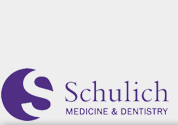Case Synopsis
Harm reduction practices have been identified as effective and promising approaches to drug use. Instead of focusing on drug users giving up using drugs, the principles of harm reduction aim to reduce the harms associated with drug addiction (Ontario Harm Reduction Distribution Program, n.d.). Providing clean needles and syringes without a limit on the amount, harm reduction practices encourage drug users to access the supplies needed to ensure they are injecting drugs safely and prevent the spread of blood-borne diseases (Ontario Harm Reduction Distribution Program, n.d.).
In response to the increasing incidences of intravenous drug use and disease transmission, the Counterpoint needle exchange program began in London, Ontario in 1992. In collaboration with the Regional HIV/AIDS Connection, the Middlesex-London Health Unit has operated the needle exchange service through the sexual health clinic (Regional HIV/AIDS Connection, n.d.). In 2008, fully supported by the City of London through the London Homeless Prevention System, London CAReS was established, and one of its roles was to keep public areas free of discarded needles (Regional HIV/AIDS Connection, n.d.).
In 2014, a six-year-old boy got a needle stick injury in a public toilet. This accident immediately created public panic, engendering a public discussion on how to manage needles safely and educating needle users on safe needle disposal. To improve the needle exchange program in London, it is important to understand project details and review the landscape of community programs, policies, and activities related to needle/syringe disposal. By comparing different programs, similarities and differences will be identified.
Case Objectives
- Understand the principles of the harm reduction approach and the operation of needle exchange programs.
- Environmental scan: review national and international needle exchange programs, and understand project details
a. Areas: London, Toronto, Ottawa, Edmonton, Vancouver, Australia, United Kingdom, Europe
b. Project details:
- Existing community programs, policies, and activities related to needles/syringe disposal
- Who distributes and collects needles? How?
- Relevant stakeholders and their interests - Analyze the similarities and differences between programs, evaluate needle exchange programs in London, and identify the gaps between London and other areas.
- Recognize best practice examples of programs and learn how to make recommendations for program development.
- Understand how to promote safe drug injection and safe needle disposal.
Case Study Questions
- Discuss the definition of a harm reduction approach and needle exchange programs.
a. What are the values and potentials of a harm reduction approach?
b. How do you evaluate the implementation and operation of needle exchange programs? - Discuss the gaps in needle exchange programs between London and other areas.
a. What are similarities and differences between programs?
b. Can you describe the gaps between London and other areas?
c. If the gaps cannot be identified clearly, what information do you think is absent? - Discuss the recommendations for safe drug injection and safe needle disposal in London.
a. What recommendations will you present to improve needle exchange programs in London?
b. What is the most urgent issue?
c. What are the main barriers and how can we address these barriers?
Keywords
harm reduction, needle exchange programs, safe drug injection, HIV prevention, infectious disease prevention, safe needle disposal
ISBN
978-0-7714-3121-0
Recommended Citation
Li, Z., Dhinsa, S., Thind, A. (2016). Safe Needles Save Lives. in: Terry, A.L. & John-Baptiste, A. [eds] Western Public Health Casebook 2016. London, ON: Public Health Casebook Publishing.


